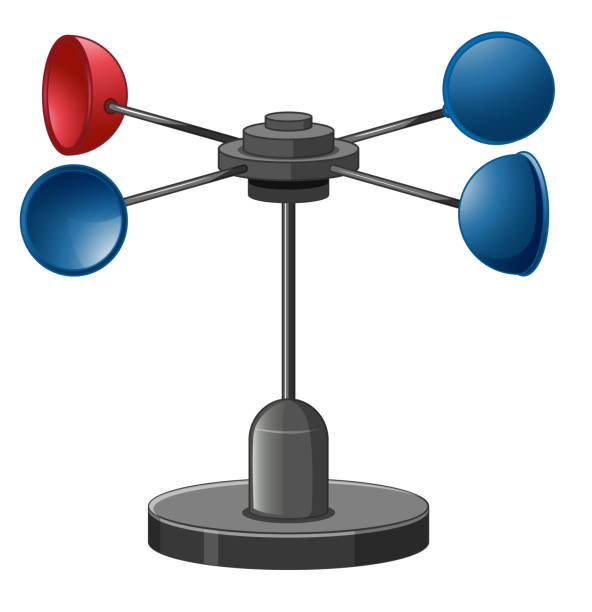Comparing Digital and Mechanical Anemometers: Which is Right for You?
Comparing Digital and Mechanical Anemometers: Which is Right for You?
Blog Article
Exploring the Functions and Benefits of Anemometers for Weather Enthusiasts and Professionals
From cup anemometers to sonic anemometers, each kind brings its distinct set of applications and benefits, shedding light on numerous elements of atmospheric problems. As we delve right into the features and benefits of anemometers, a much deeper understanding emerges not just of prevailing climate sensations but additionally of the wider implications for markets like wind energy manufacturing and environmental study.
Value of Anemometers in Weather Condition Monitoring
Anemometers play an important role in weather condition monitoring by giving precise dimensions of wind speed, assisting in forecasting and understanding climate patterns. These instruments, varying from traditional mug anemometers to modern ultrasonic anemometers, are necessary for meteorologists, researchers, and weather condition enthusiasts alike. By determining wind rate, anemometers help in establishing the intensity of climate phenomena such as tornadoes, storms, and cyclones. In addition, they provide useful information for aviation, maritime operations, and different markets that are delicate to wind problems.

Kinds of Anemometers and Their Applications
With the essential duty anemometers play in climate surveillance and forecasting, comprehending the various kinds of these tools and their applications comes to be crucial for specialists and lovers in the field. The most usual kinds of anemometers include cup anemometers, vane anemometers, hot-wire anemometers, and ultrasonic anemometers. Mug anemometers contain three or four mugs installed on straight arms that turn with the wind, measuring its rate. Vane anemometers, on the various other hand, use a freely revolving vane to line up with the wind direction, providing both wind rate and direction dimensions. Hot-wire anemometers run based on the concept of convective warmth transfer, where the cooling impact of the air flow is gauged to establish wind speed. Ultrasonic anemometers make use of ultrasonic acoustic wave to calculate wind rate and direction precisely.
Mug anemometers are appropriate and durable for basic climate monitoring, while vane anemometers are favored for directional dimensions. Ultrasonic anemometers are non-intrusive and supply high precision, typically made use of in study and specialized weather tracking applications.
Benefits of Making Use Of Anemometers in Projecting
In weather forecasting, the application of anemometers offers important advantages for enhancing the accuracy of weather projecting. Anemometers gauge wind rate and instructions, supplying important data for anticipating weather patterns. By incorporating wind data right into projecting designs, meteorologists can better understand the movement of weather systems, anticipate adjustments in climatic problems, and problem a lot more accurate forecasts.
Furthermore, anemometers play an important function in evaluating possible climate dangers. Monitoring wind speeds aids forecasters forecast serious climate events such as storms, hurricanes, and wintertime tornados with higher accuracy. This very early warning system makes it possible for authorities to provide timely signals and execute necessary precaution, reducing the dangers to life and residential property.
Additionally, visit our website anemometers aid in enhancing renewable resource manufacturing. By examining wind patterns, meteorologists can determine appropriate places for wind farms and anticipate energy outcome, adding to the efficient generation of wind power.

Anemometers in Wind Power Production
Provided the essential role anemometers play in supplying exact wind data for climate projecting and risk evaluation, their value reaches the realm of wind energy manufacturing. Anemometers are vital tools in the area of wind power, where the dimension of wind speed and direction is essential for establishing the expediency and effectiveness of wind generator installments. By properly gauging wind rates at differing elevations, anemometers aid maximize the positioning and design of wind turbines to make best use of power result.
In wind ranches, anemometers are strategically placed to collect real-time wind data that is used to evaluate the potential energy production of a website. This information is crucial in determining the financial viability of wind power tasks and in projecting power generation to ensure grid stability. Additionally, anemometers help in keeping track of wind conditions to maximize generator efficiency, prevent additional resources damages from high winds, and make sure the safety and security of workers functioning in the location of wind generators.
Enhancing Weather Condition Recognizing With Anemometers

Anemometers play a vital duty in enhancing our understanding of microclimates. These local climate condition can vary considerably from wider regional forecasts, making it vital to have precise data for particular areas. anemometer. By strategically putting anemometers in numerous places, researchers can gather detailed information on just how wind acts in various terrains, urban atmospheres, or bodies of water
Furthermore, anemometers add to enhancing climate projecting designs by giving real-time data on wind actions. This details is especially important for predicting extreme weather condition occasions, maximizing farming practices, and sustaining sectors like air travel and maritime navigating. On the whole, anemometers are very useful instruments that allow us to dig deeper right into the complexities of climate systems, eventually resulting in more better-informed decisions and exact forecasts.
Conclusion
In final thought, anemometers play a crucial function in climate monitoring and forecasting by measuring wind rate and instructions. like this Anemometers also have applications in wind energy production, additional highlighting their value in both meteorology and sustainable power sectors.
From cup anemometers to sonic anemometers, each kind brings its one-of-a-kind set of applications and advantages, dropping light on numerous facets of climatic problems. These tools, ranging from conventional cup anemometers to contemporary ultrasonic anemometers, are crucial for meteorologists, researchers, and weather enthusiasts alike. The most common kinds of anemometers consist of cup anemometers, vane anemometers, hot-wire anemometers, and ultrasonic anemometers. Mug anemometers are robust and appropriate for basic weather monitoring, while vane anemometers are favored for directional measurements. Anemometers are vital tools in the field of wind energy, where the measurement of wind rate and instructions is crucial for identifying the expediency and effectiveness of wind turbine installations.
Report this page